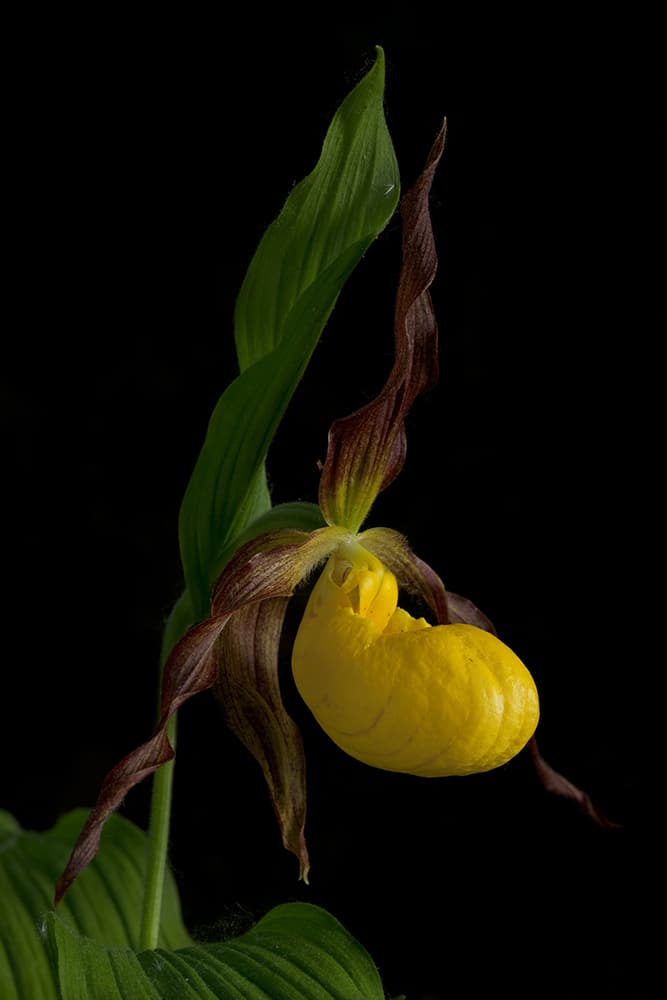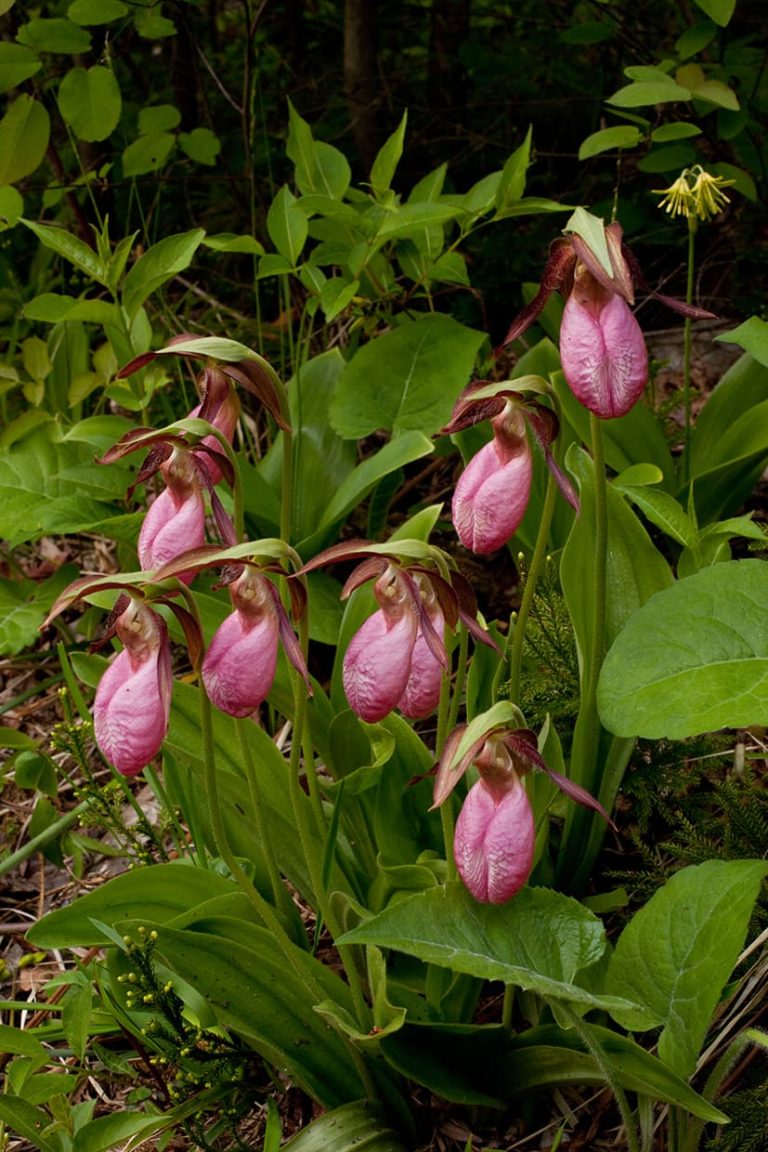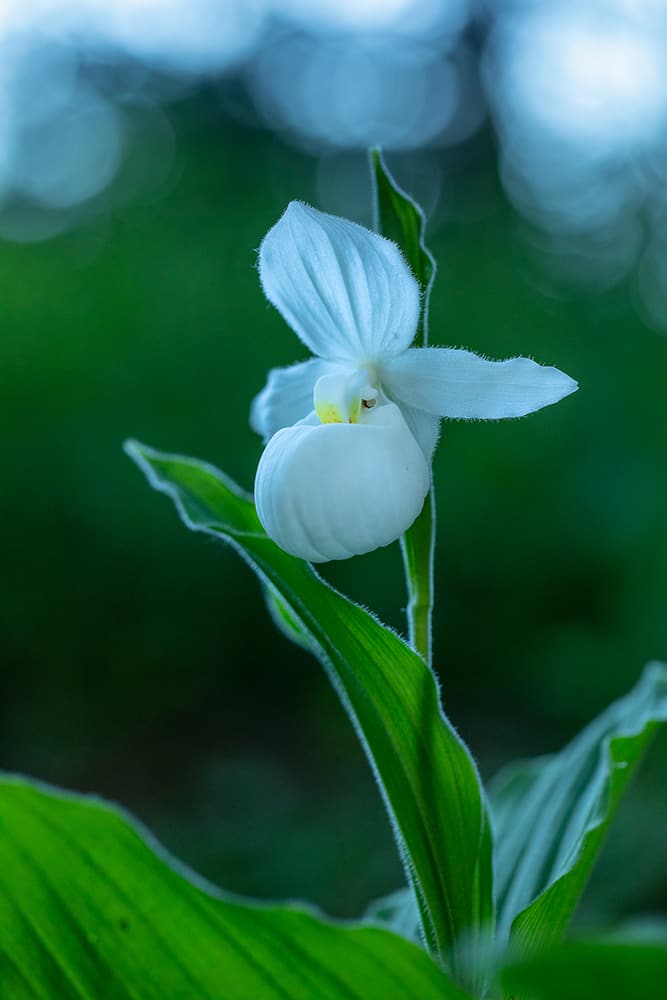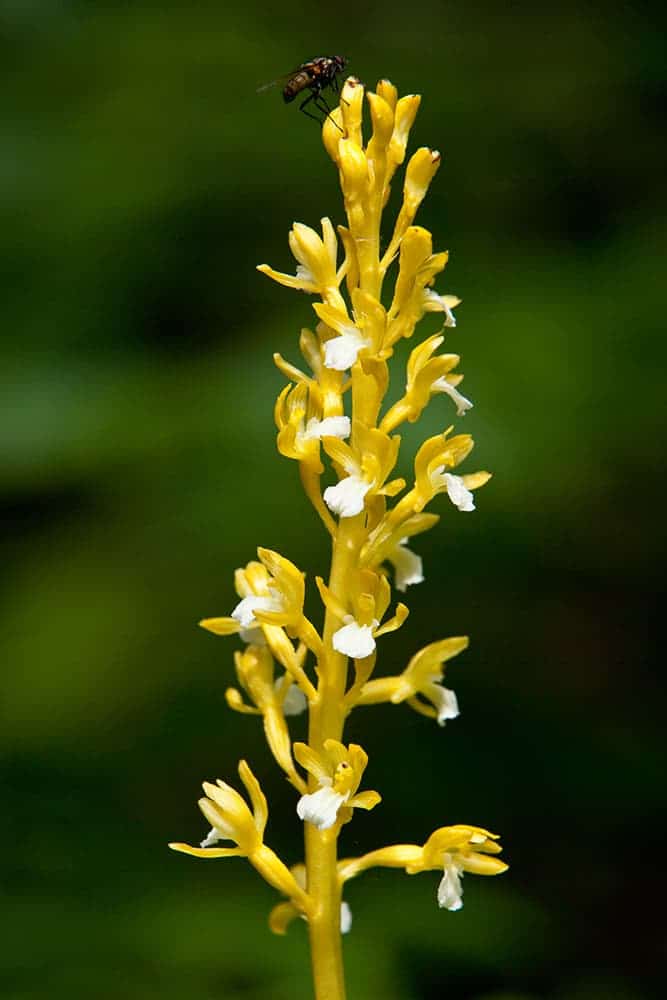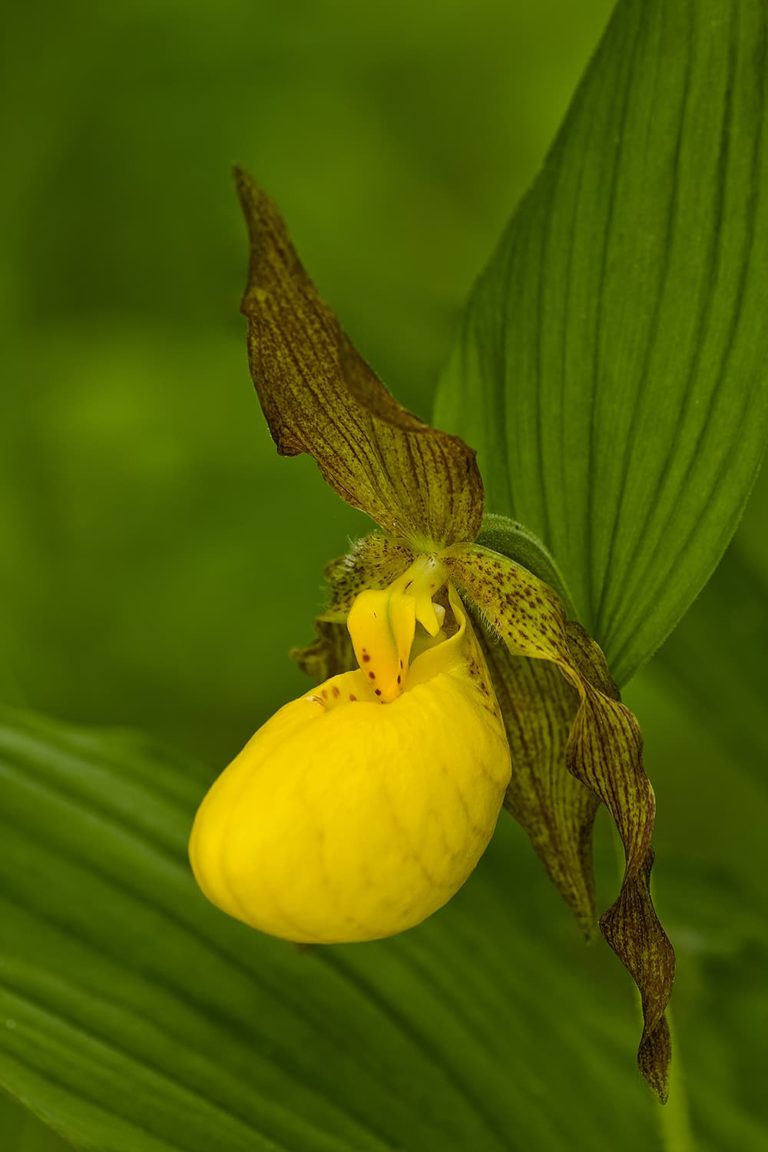I became infatuated with wildflowers not long after I picked up my first camera. They are abundant, vibrant, and vary drastically in physiology. I jumped in head first to learn as much I could about the different species found in Minnesota, their suitable habitat, and overall lifecycles to increase my successes in finding them. This obsessive methodology is what led me to orchids, the holy grail of wildflowers, scarce and unmatched in beauty. It has been 15 years now, and each spring is spent obsessing over the species I have yet to see and document.
It all began by happenstance. I was hiking a remote trail at George H. Crosby Manitou State Park, with no intention other than the solitary immersion into the dense boreal forests during a slight rainfall. The trail was overgrown, littered with fallen boles, when I noticed a glimmering iridescence unlike anything I had seen before. I had stumbled upon on one of Minnesota’s most common orchid species, the stemless (pink) lady’s slipper, glimmering with rain drops. Since this initial encounter I have been graced by this species presence in campsites and portages in the Boundary Waters, and while bushwhacking remote sections of the Superior National Forest, and every time their beauty stops me in my tracks for a moment of admiration. This particular orchid can grow in a range of habitats, but the underlying conditions are partial shade, and acidic and nutrient poor soil. I have found them in arid, open outcroppings and in dense, dark, damp bogs. The plant ranges from 6-17” tall and the slipper itself up to 2.5” long.
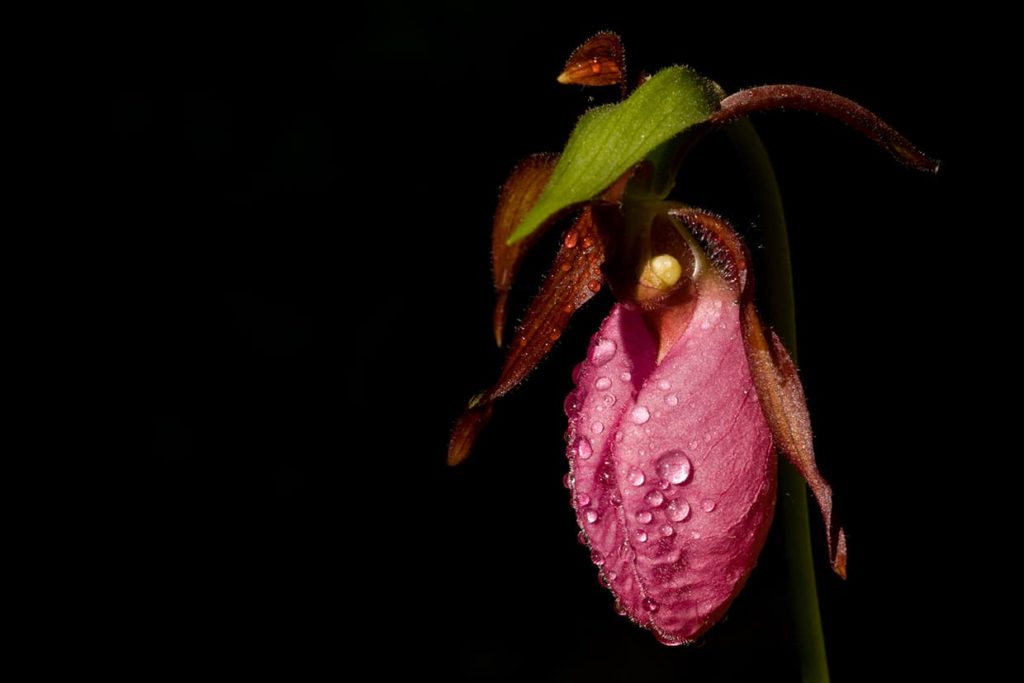
Lady’s slippers
I was hooked after finding my first orchid, and it became my goal to photograph all the slipper-shaped species found in Minnesota. I decided that pursuing the more common species initially was advantageous because if I wasn’t keen on the photographs I took, I would have a higher probability of locating them again in the future. I did my research and landed on the greater yellow lady’s slipper as my next pursuit. I got wind of multiple colonies growing along the Superior Hiking Trail and began planning trip based on weather, seasonality and intel from locals in the region. This orchid is large, and hard to miss, the plant itself can stand up to 30” tall with a single 2” yellow slipper (sometimes two). After a moderate hike I finally reached my destination and came to a damp, shaded hillside with roughly 20 plants all in peak bloom. I still vividly remember admiring the deeply furrowed parallel venation (parallel veins) in the leaves, and thinking that their beauty matched the flower itself. Parallel venation is a characteristic shared amongst most orchids, however, not all are furrowed such as this species.
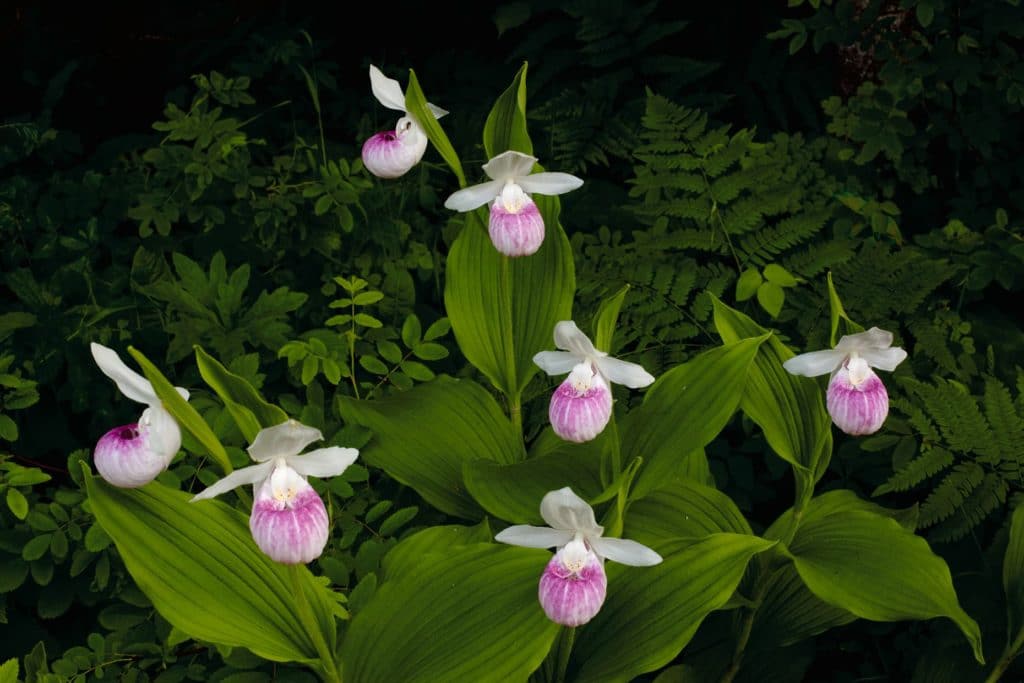
After a few years and many successes with orchids throughout the state, I set my sights on our state flower, the showy lady’s slipper. This flower, in my opinion, is the most beautiful of the large slipper-shaped orchids found in Minnesota. I was living in Bemidji at the time, pursuing my undergraduate degree in biology, when I stumbled upon hundreds of these flowers in the Chippewa National Forest. There were too many to choose from, I was overwhelmed by the decision of which colony to photograph. I evaluated each grouping for the best looking flowers, intact foliage, and orientation that would be pleasing to the camera. It took hours to choose a specimen and wait for the light to compliment the scene, but it finally all came together, resulting in my favorite orchid photograph to date. Fast forward almost a decade, and I was presented with the opportunity to document the most rare and beautiful orchid I’ve encountered. A friend tipped me off to an albino showy lady’s slipper, a unicorn in the orchid realm. The only caveat being that the only available day I had followed an all-nighter in the field with biologists. Ultimately, I sucked it up and stayed up for 32 hours straight just for the opportunity to set my eyes on these incredible flowers, and I would do it all over again! It is common with this species to see dense clumps of stems with multiple flowers, up to 20 stems can emerge from the same rhizome. Plants can range from 10-27” tall and are found in shaded and sunny locations varying from moist prairies, sedge meadows and calcareous fens. The showy also blooms the latest out of all the slippers, usually peaking at the end of June through early July.
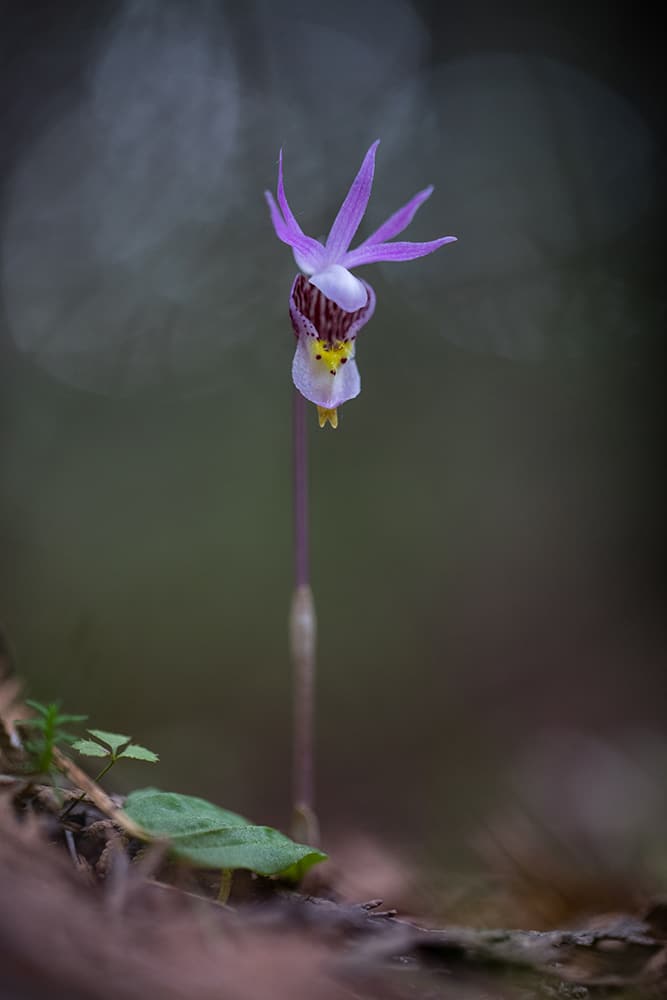
The elusive calypso
Next, is my nemesis and personal favorite, the calypso orchid. A small orchid growing up to 6” tall, with the flower only reaching 1.25” in height. These slight orchids are a federal species of interest and are found in shaded, dense coniferous forests. They produce a single small leaf, which emerges in late summer and persists through the winter, making locating prospective flowers easier if you know what to look for. This slipper eluded me year after year, only to be severely disappointed each spring. It took me the better part of a decade to locate, and finally photograph this incredible species. I was notified of a location where these grew and I planned a trip specifically for them.
I spent 5 hours searching the forest floor of a northern white cedar stand and I could not locate a single flower. I was defeated. I sat down contemplating my ongoing chase with this unicorn, beginning to think this was borderline insanity, when I noticed something very small and vibrant about 10’ from me. I carefully approached, planning each step as to not damage the delicate forest floor and other prospective flowers. Finally, I had found my biggest obsession of the decade, in the form of a single flower. Believe it or not, but I spent the next two hours with my face in the damp moss photographing it from different perspectives as the light moved across the sky.
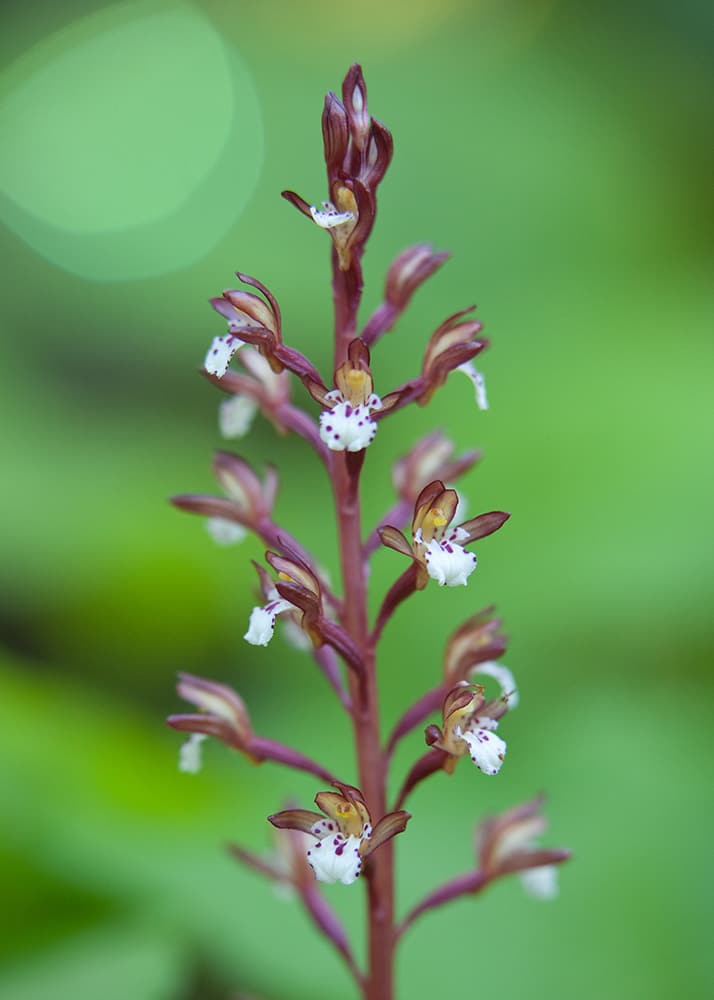
I have encountered and photographed a few other orchid species, but without intent. Both species belong to the genus Corallorhiza, aka coralroot. The first is the western spotted coralroot, standing up to almost 21” tall with up to 50 half-inch flowers. The identifying characteristics of the species are not only the obvious spotted flowers, but also the stem that can range from bright red to brown. Their distribution is limited to upland forests during June and July. I found this intriguing species while hiking the Superior Hiking Trail, unaware that this species even existed at the time. I was so focused on slipper-shaped orchids that I overlooked all other species I could encounter while executing this project. Oddly enough, I encountered a second coralroot species about 30 minutes after this one, the early coralroot, which varied drastically in in size and coloration. With up to 25 flowers, and standing up to 14” tall, it paled in grandeur to its cousin. The stalks can vary from green to yellow, adorned with flowers with a white lip, and the sepals and petals matching the coloration that of the stalk. The coral-roots are a great genus for beginner orchid hunters, as different species are in bloom from May through October.
Still hunting for the ram’s-head
I have one last slipper-shaped orchid left to photograph in Minnesota, the ram’s-head lady’s slipper, the rarest of the bunch and threatened in Minnesota. This is my passion project for this year, and with any luck, I can close the door and move on to other boreal orchid species. Moving forward I will be focusing my efforts on documenting the lifecycle of boreal orchid species through the use of time-lapse photography. The goal is here is to depict both the habitat for each species and the entire plant structure, which will be used in the aid of identification and conservation by the Minnesota DNR.
If you are inspired to search for the beautiful orchids found in Minnesota, I urge you all to take extreme caution in doing so. These flowers are fragile and highly sensitive, with many species taking years (if not over a decade) to produce their first flowers. It is also illegal to harvest and transplant these incredible flowers, so please admire them in their natural environments.
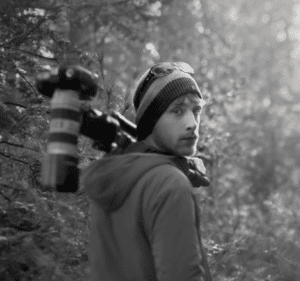
MORE INFORMATION:
Book: Native Orchids of Minnesota, Welby R. Smith
Book: Wildflowers of the Boundary Waters: Hiking Through the Seasons by Betty Vos Hemstad
Orchids of Minnesota (PDF via MN DNR)







